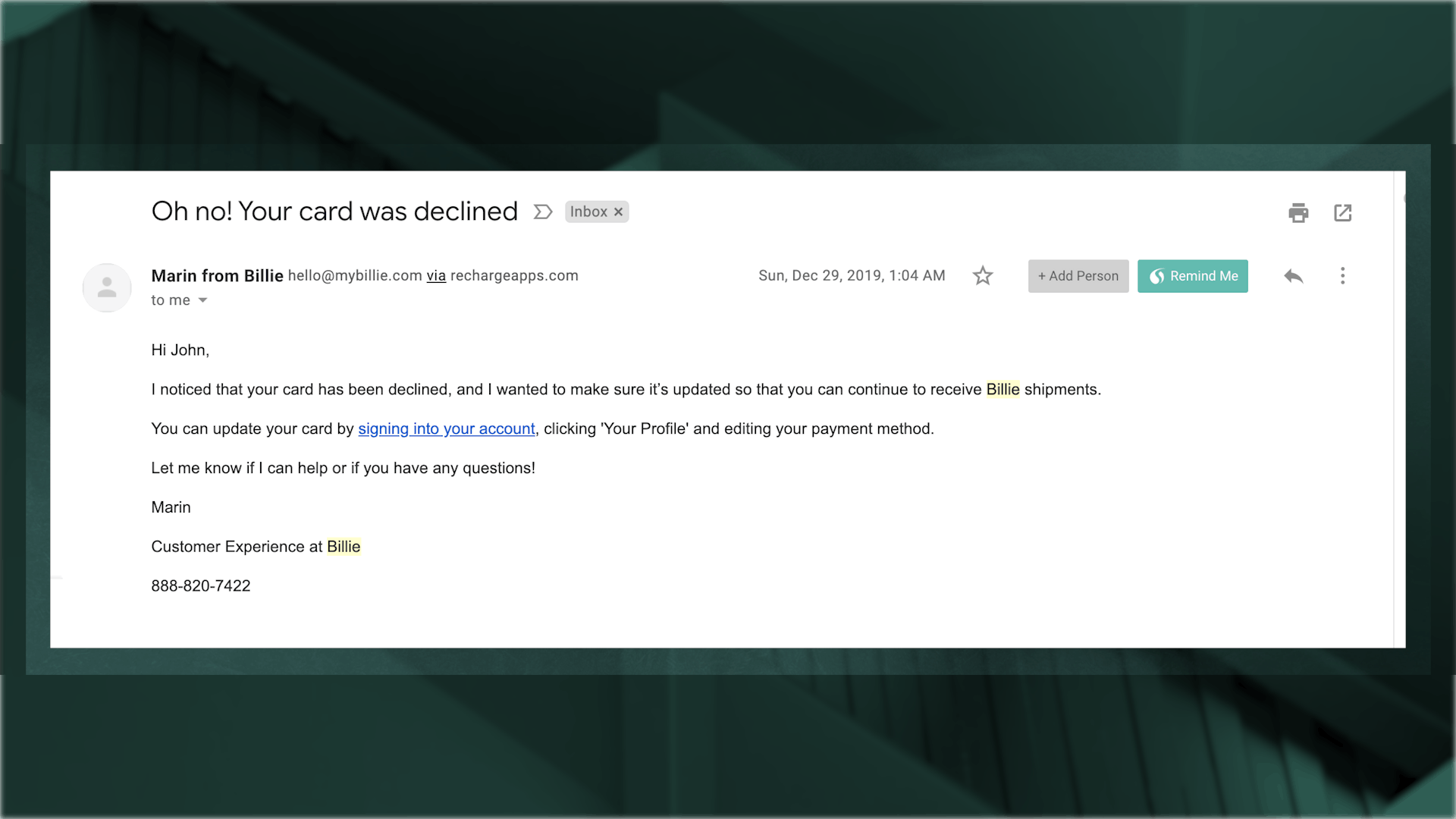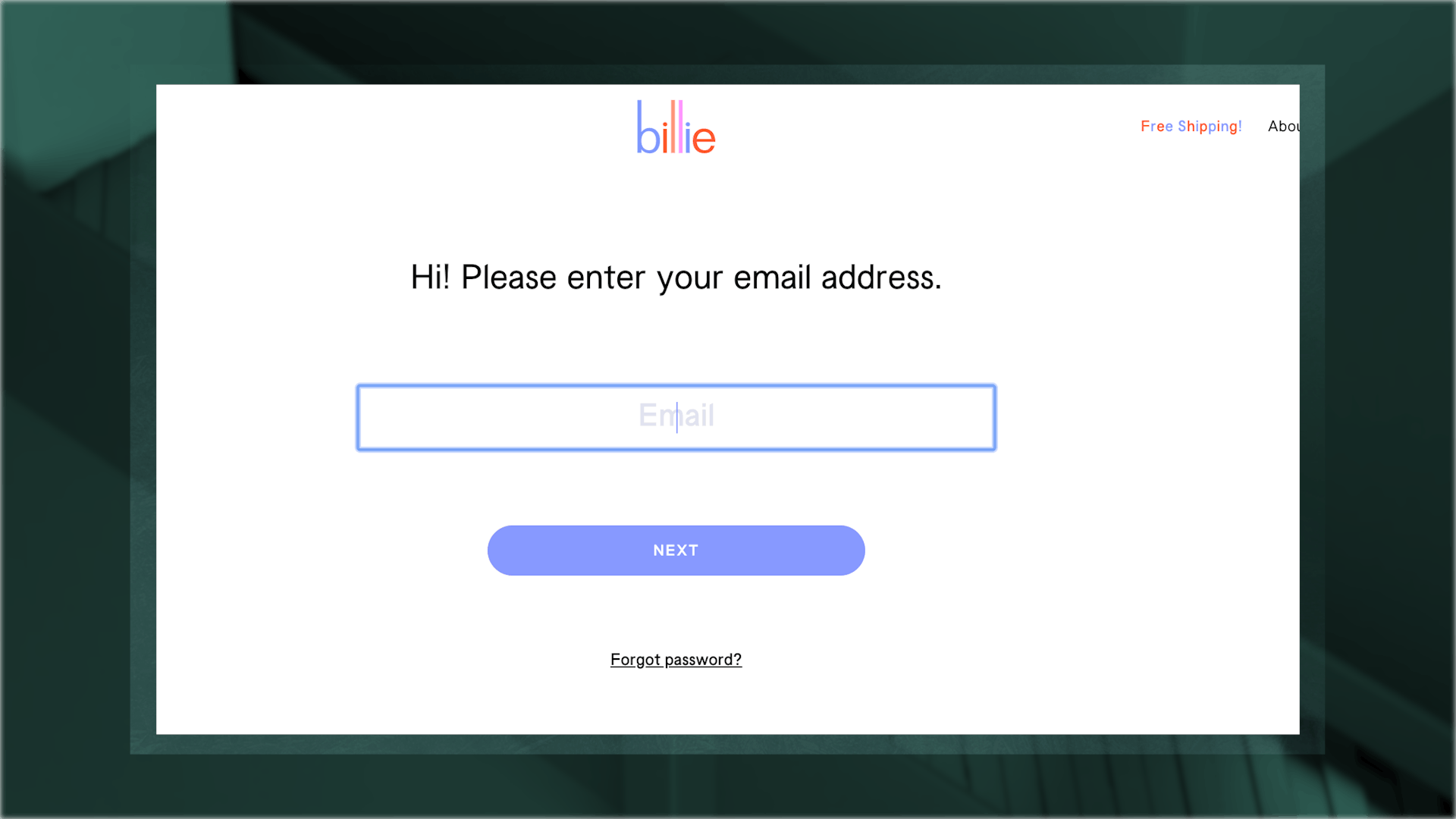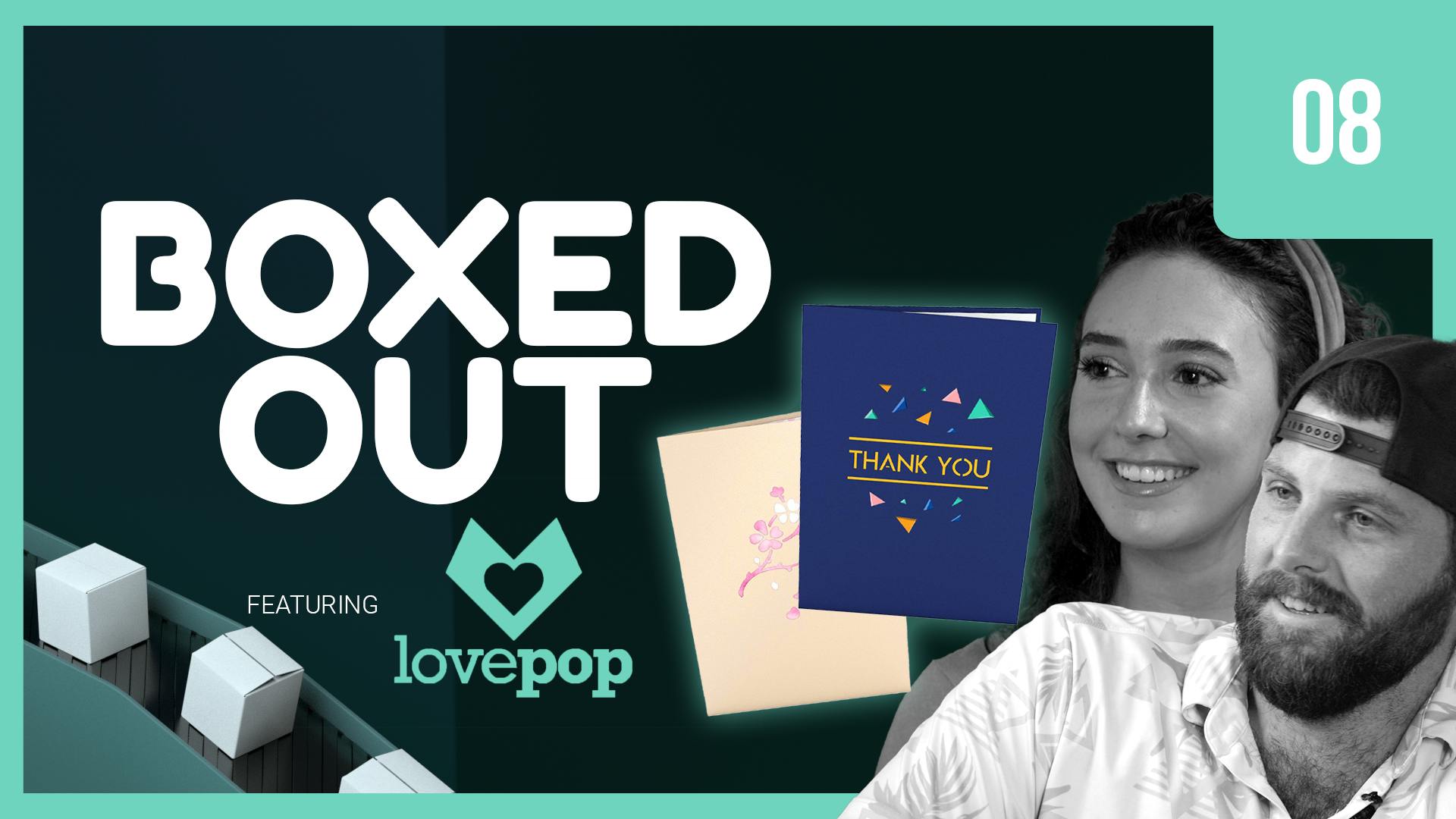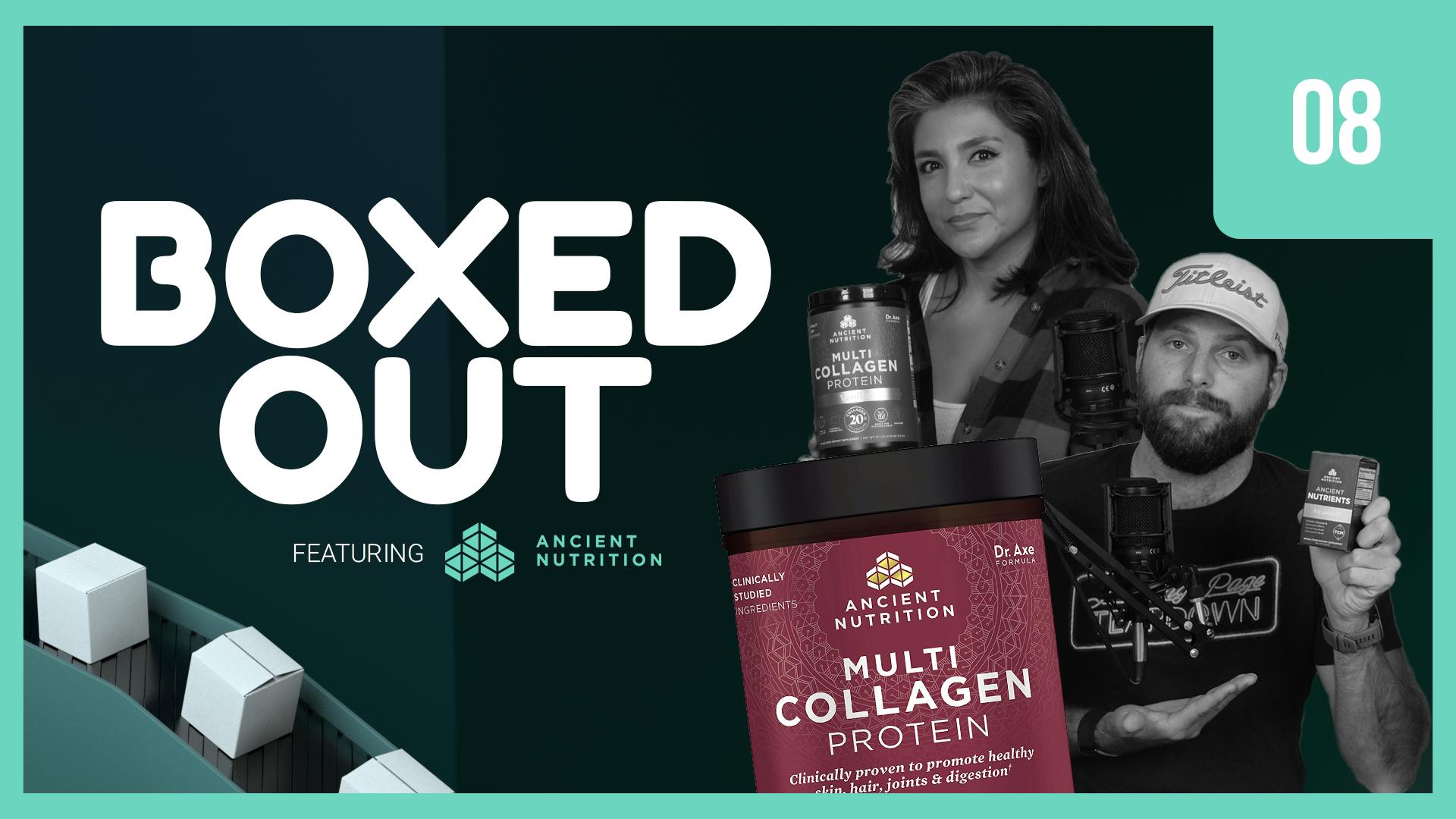
A Close Shave in Retention with Billie
This episode might reference ProfitWell and ProfitWell Recur, which following the acquisition by Paddle is now Paddle Studios. Some information may be out of date.
Please message us at studios@paddle.com if you have any questions or comments!
Introducing Boxed Out, a show where we buy from DTC's hottest subscription brands to discover what happens when we try to cancel. Will the brand save us? Or will the brand let us go because of poor retention practices? All that, and lessons you can learn from for your own business.
Billie
Here's a secret—women have body hair, too. Shocking, we know, but in the women's shaving market, the incumbent players don't want you to know that. In fact, they started the myth of hairlessness in 1915 when a Harpers Bazaar ad told women that in order to get a man they needed to remove "objectionable" hair. The myth took hold and with the rise of hemlines and sleeveless camisoles and the perception of women's beauty became hairlessness.
That is until Billie, the women's body product subscription service. Co-Founded in 2017 by Georgina Gooley, one of the advertising veterans behind Old Spice's revolutionary ad campaign, and Jason Bravman, a former VP at Deutshe Bank, Billie aims to build a brand that wasn't about elevating some goddess, but instead celebrated women through the view of the female gaze.
Billie's success stems from two big themes:
First, they called B.S. on the pink tax, a pricing strategy that charges women 10-15% more for the same products, but instead they're pink and advertised with models that make you feel bad. Billie priced their products the same as the mens and even came out with the Pink Tax Rebate, a cheeky ad campaign that educated women on just how much they were getting overcharged.
Billie also focused on their customers, latching on to something so obvious—men and women shave differently. Through endless surveys and prototypes, Billie discovered women have to shave 10x the surface area as men, navigating countless curves and angles with more soap that ends up getting stuck in common razors that keep falling off the shower wall.
This led to the Cadillac of women's razors—the creme de la creme of women's razors—Billie's flagship. Billie's rounded edges safely glide across knees with no nicks or cuts. They're encased in shaving soap for a quick shave and have more space between each cartridge's five blades to keep hair and lather from plugging up. And dang are they beautiful…
Women love them, so much so that Billie blew through their first year's sales goal in just four months, leading to an acquisition by industry behemoth Proctor and Gamble just three years after launching. All because they focused on the customer and in return—customers threw them thousands and thousands of glowing reviews.
Billie's retention strategy
Not everything's amazing about Billie's strategy though, although there is a lot to learn from them. Gooley mentioned that the Billie strategy is all about maintaining the relationship with each and every customer—retention is key. Most brands don't focus on this aspect of their business enough.
Why is retention important?
Well, because you spend half your budget and time acquiring customers, but to be successful, you need to keep them. The beauty of the subscription model is that the relationship with the customer is baked directly into how you make money. If that customer is happy, they'll keep buying from you in the long term. If they're upset or not seeing the value, they'll cancel quickly.
Plus, money talks here. Those subscription ecommerce companies using the tactics we're going to talk about have 2x the customer lifetime value (LTV), 2x the average order value, and 3x higher growth rates, because they're not worried about plugging a leaky retention bucket.
To highlight the importance here, let's look through Billie's retention strategy and break down what they're doing well, and not so well, so you can learn for your own DTC business.
Retention has three parts:
- Active churn, which are customers who are actively choosing to cancel your product.
- Expansion revenue, which are your existing customers that buy more product.
- Delinquent (or involuntary) churn, which are customers who's credit card or payment has failed, which sadly is one of the largest single buckets of where you're losing money.
Billie's active churn:
When we look at Billie's active churn, there are so many reasons why a customer may cancel. We want to make sure Billie is collecting information during the cancellation process. Collect information on why a customer cancels to improve the product for others but also to get in front of these customers with some type of offer to entice them to stay.
The good:
Billie's onboarding is actually pretty slick for reducing churn, because they're allowing people to customize the color of their razor. Color selection might not seem like a big deal, but we've found that customization—even if it's subtle—actually increases retention because customers are more bought into their choice. What's pretty interesting is those customers who go through a customization flow tend to have 10-20% higher retention rates compared to customers who are just adding something to their cart. We discovered this from our research looking into 1,600 DTC subscription companies.
Billie also made choosing frequency easier. Instead of asking how often a customer wants a shipment, they instead have the customer answer questions on their shaving routine frequency. Customers who get too many products tend to cancel or pause and that's what we want to avoid. Good cancellation and churn reduction starts in the actual purchasing process.
The bad:
Something Billie isn't doing so well is their off-boarding flow when a user cancels. When we go to cancel our subscription, they do ask us why we're leaving, but it's just a free response. At the very least they should be collecting more information here. We don't need them to hold us hostage, but they should survey why I'm leaving... then put a salvage offer in front of us or remind us that we can pause our subscription to keep us on board as a customer.
Our research, looking at more than 1, 000 DTC subscription companies, found that companies that properly offer up salvage offers tend to save 15-30% more customers who go through a cancellation flow.
Billie's expansion revenue prowess:
Expansion revenue is crucial, because your existing customers are willing to buy more from you—you just have to make sure to ask. Plus, those customers who have at least one add-on or additional purchase tend to have 18-54% higher lifetime value. This is based on a study we completed on over 50,000 DTC subscription companies. The takeaway here: customers are paying you more over the life of the subscription, but they're also sticking around longer because they're more ingrained within your product.
The good:
Billie's brilliant here because they're adding additional products in our checkout flow that are complementary to the purchase we're making. Most brands aren't overt enough with these offers. As long as you give people the option to skip you should be going for expanded average order value with add-ons, which also make us go deeper into Billie's brand.
The bad:
On the not so good front, Billie didn't really send me any emails looking for an upsell, or even just getting into their brand deeper. Maybe our fake profile didn't fit their criteria or they wanted to wait until our first shipment came, but remember that when we make an initial purchase, we're an excited buyer—and that excitement can be amplified further.
Billie's credit card failure flow:
Now let's talk about the sexiest topic in the world—credit card failures. We know you don't wake up sweating in the middle of the night thinking about credit cards—that's our job—but here's why we obsess over things like this: just under 40% of the customers that leave you are leaving you because of failed payments. To get these folks back, we want to make sure Billie is treating these folks like a marketing channel, sending them messages before the point of failures, all the way to after the point of failure through email and text messages.
The good:
Here, Billie is doing the absolute basics with sending payment-failure emails to let me know the credit card failed. They sent us four payment-failure emails—plain text—which is good, because plain text emails work much better than stylized html emails for credit card recovery.
The bad:
They lose me, though, when I click on these emails by making me log into my account. They should be making it so I can easily update my card in a mobile-optimized form that doesn't require a log in.
There's a lot more to improve here.Their campaign should have been more optimized. We didn't receive any text message nudges either. Again, they're doing the absolute basics and based on their size, they likely could double their recovery rate if they make some adjustments—resulting in millions in additional lifetime value.
Overall:
Billie's retention is doing a pretty average job. It was fine. If they want to take on this multibillion-dollar industry and come out on top though, they'll need to step it up.
Retention revamp
Let's walk through three big things we'd change immediately about Billie's retention strategy, so we can all learn for our own brands.
First though, why do we feel we have any authority to even talk about this? Roughly 20% of the entire subscription market is using ProfitWell, so we're sitting on more data than anyone else. Simply put, we have the data to know what works and what doesn't, and we care more about this problem than anyone else out there.
Changes needed now:
- Credit card failure flow
We'd change the credit card failure flow, which will increase their recovery rate. We'd keep the four email drip campaign they have going and add a fifth email. The copy was great, but that extra email should help. Bear in mind that plain text is not the only key here, these emails should appear like they're coming from a human being. Having these emails signed "Marin" gives us the impression that we may let Marin down, so we're more inclined to reciprocate with either letting "Marin" know we no longer want the subscription, or to update the credit card.
Be sure the emails are kind though. We see way too many bill collector-type emails from brands. We'd also make sure Billie has their smart retries turned on. We noticed they didn't even really retry our card that much and you can get quite a few recoveries just by retrying a credit card. Remember credit cards are mechanical devices subject to failure, so sometimes they have quirks. DTC brands should make sure one of those retries goes at 12:01am PT on the first and 15th of the month. It's a little hack—it's when people get paid.
The other piece we'd do here is make sure a user doesn't have to log in to update their card. It's a much better experience and can be done securely to increase recovery rates pretty dramatically.


- Add off-boarding to their cancellation process
When a customer goes to cancel, you don't want to hold them hostage, but you absolutely want to make sure that you're asking them why they're leaving. Based on their answer, you can then offer them up support or an offer to adjust the frequency of their blade. If they just didn't get a chance to try things out—give them another month or pause their subscription for a month.
The important thing here is to collect the data and information around why they're leaving. If you do go with a salvage offer or pause the subscription, make sure it's time-boxed and not indefinite. You obviously need to protect your margins, but this is where old inventory, memberships, or even a small discount can nudge the customer to keep trying your product for another month. - Review add-on strategy
Billie does a nice job with this when you're first becoming a customer, but when we go beyond that window we felt like we weren't offered enough. Send us a text or email telling us about an exciting new shampoo or lotion. Get us to expand that revenue! Especially with a brand we're meant to fall in love with.
Sometimes you just need to ask, and keep in mind the beauty of the subscription model is the relationship being built right into how you make money. Nurture that relationship and your cohorts will expand rather than contract.
Who's up next?
Next week we're going in a completely opposite direction and we're going to be learning from Black Rifle Coffee, a brand that's embedded a point of view and values right into a seemingly commoditized product. We'll see what they're doing well and not so well so make sure you subscribe to boxed out and tell your friends so we can get this knowledge into the hands of as many people as possible.






